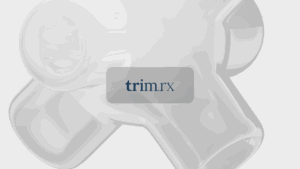Can Running Burn Belly Fat Fast? A Comprehensive Guide to Effective Weight Loss

Introduction
Did you know that running can burn more calories than most other forms of exercise, making it a powerful tool in the fight against belly fat? For many people, the quest to lose stubborn belly fat can feel like an uphill battle. Statistics reveal that around 70% of adults in the U.S. are overweight or obese, and excess abdominal fat is a major contributor to various health risks, including heart disease and diabetes. The good news is that running not only helps in burning calories but can also lead to a significant reduction in belly fat when done correctly.
In this blog post, we will explore the effectiveness of running as a method to burn belly fat quickly and efficiently. We will delve into how different running techniques, combined with dietary adjustments and lifestyle changes, can enhance your results. By the end of this post, you will have a clear understanding of what it takes to effectively use running as a tool for weight loss, particularly targeting belly fat.
We will cover the science behind fat loss and running, the best practices for incorporating running into your routine, and how to optimize your workouts for maximum fat-burning results. Additionally, we will discuss the importance of nutrition and lifestyle factors in supporting your running efforts. This comprehensive approach will not only help you burn belly fat but also promote overall well-being.
So, whether you’re a seasoned runner or just starting, we invite you to join us as we explore this empowering journey toward a healthier lifestyle, one run at a time.
The Science of Belly Fat and Running
Understanding Belly Fat
Belly fat, or abdominal fat, consists of two main types: visceral fat and subcutaneous fat. Visceral fat, which surrounds your internal organs, is particularly harmful and associated with serious health risks. On the other hand, subcutaneous fat is the layer of fat just beneath the skin, which is less harmful but can still affect your appearance and self-esteem. Understanding these two types of fat is crucial in addressing how to effectively reduce them through exercise like running.
How Running Burns Calories
Running is known for its high calorie-burning potential. According to the American Council on Exercise, a 180-pound person can burn approximately 170 calories in just 10 minutes of running at a steady pace. This caloric burn increases with the duration and intensity of the run. For example, a 30-minute run can burn over 500 calories, making it an efficient exercise for weight loss.
The energy required for running primarily comes from carbohydrates and fat stored in the body. When running, especially at a high intensity, your body utilizes these energy stores, which can lead to fat loss, including in the abdominal area. However, it’s essential to recognize that running alone may not target belly fat specifically; overall weight loss contributes to a reduction in belly fat.
The Role of Intensity and Duration
The intensity and duration of your runs significantly influence how effectively you can burn belly fat. Research indicates that high-intensity interval training (HIIT), which includes short bursts of intense running followed by periods of rest, can be particularly effective for fat loss. This type of training not only burns calories during the workout but also elevates your metabolism for hours afterward—a phenomenon known as the “afterburn effect.”
Summary of Key Points
- Belly fat consists of visceral and subcutaneous fat, with running being effective in reducing both types.
- Running burns a significant amount of calories, making it a powerful weight loss tool.
- High-intensity running and interval training can enhance fat-burning effects compared to steady-state running.
How to Optimize Your Running Routine for Belly Fat Loss
Establishing a Running Schedule
To effectively burn belly fat through running, it’s recommended to establish a consistent schedule. Aim for at least 30 to 60 minutes of moderate-intensity running four to five times a week. If time constraints limit your ability to run frequently, consider supplementing your running with other forms of exercise, such as swimming or cycling. This cross-training approach can help you maintain a balanced fitness regimen while avoiding injury.
Incorporating HIIT into Your Routine
High-intensity interval training (HIIT) is one of the most effective methods for burning belly fat quickly. Here’s how you can structure your HIIT workouts:
-
Sprints: Alternate between 30 seconds of sprinting at maximum effort and 1-2 minutes of walking or slow jogging to recover. Repeat this cycle for about 20-30 minutes.
-
Fartlek Training: This technique combines continuous running with bursts of speed. For example, after a warm-up, sprint for 1 minute followed by 2 minutes of easy running, and repeat for the duration of your run.
-
Hill Repeats: Find a hill and sprint up for 20-30 seconds, then walk or jog back down for recovery. Repeat this for a set number of repetitions.
Varying Your Running Terrain
Changing your running environment can also enhance your workout. Trail running, for example, engages more muscle groups due to uneven terrain, which can lead to increased calorie burn and activation of your core. Consider incorporating different surfaces—like hills, trails, and tracks—to keep your workouts fresh and challenging.
Summary of Key Points
- Establish a consistent running schedule of 30-60 minutes, four to five times a week.
- Incorporate HIIT workouts to maximize fat burn.
- Vary your running terrain to engage more muscles and prevent burnout.
The Importance of Nutrition in Burning Belly Fat
Understanding Caloric Deficit
To lose weight, including belly fat, you must consume fewer calories than you burn—a state known as a caloric deficit. While running significantly burns calories, your diet plays an equally important role. Focus on creating a balanced meal plan that emphasizes whole foods, lean proteins, healthy fats, and plenty of fruits and vegetables.
Making Healthy Food Choices
-
Prioritize Whole Foods: A diet rich in whole foods—such as fruits, vegetables, whole grains, lean proteins, and healthy fats—will provide the nutrients your body needs without excess calories.
-
Control Portion Sizes: Be mindful of portion sizes to avoid overeating, even when consuming healthy foods. Understanding serving sizes can help you maintain a caloric deficit.
-
Stay Hydrated: Proper hydration is crucial for optimal performance and recovery. Aim to drink plenty of water throughout the day, especially before and after your runs.
-
Limit Processed Foods: Reduce your intake of processed foods high in added sugars and unhealthy fats. These can contribute to weight gain, particularly around the belly.
The Role of Timing and Frequency
When you eat can also impact your energy levels and weight loss efforts. Some studies suggest that eating smaller, more frequent meals can help regulate hunger and boost metabolism. Additionally, consider fueling your body with a healthy snack 30-60 minutes before your run to enhance performance.
Summary of Key Points
- Achieve a caloric deficit to lose weight effectively.
- Prioritize whole foods and control portion sizes.
- Stay hydrated and limit processed foods.
- Consider meal timing to optimize energy levels.
Lifestyle Factors That Impact Belly Fat Loss
Sleep and Stress Management
Quality sleep and effective stress management are vital components of any weight loss strategy. Lack of sleep can disrupt hormones that regulate appetite, leading to increased cravings and potential weight gain. Aim for 7-9 hours of quality sleep each night.
Similarly, chronic stress can lead to weight gain, particularly in the abdominal area, due to the hormone cortisol. Engage in stress-reducing activities, such as yoga, meditation, or deep-breathing exercises, to support your overall wellness.
Incorporating Strength Training
While running is an excellent cardiovascular workout, incorporating strength training into your routine can enhance your weight loss efforts. Building muscle increases your resting metabolic rate, meaning you burn more calories even when at rest. Aim to include strength training exercises at least twice a week, focusing on major muscle groups.
Summary of Key Points
- Prioritize quality sleep and stress management to support weight loss.
- Incorporate strength training into your routine to boost metabolism.
Conclusion
In conclusion, running can indeed be a powerful ally in your journey to burn belly fat fast, but it is most effective when combined with a holistic approach that includes proper nutrition, strength training, and lifestyle adjustments. By establishing a consistent running schedule, optimizing your workouts with high-intensity intervals, and making mindful dietary choices, you can significantly enhance your results.
As we at TrimRx believe, achieving sustainable weight loss is about merging innovative health solutions with personalized care. Our commitment to supporting individuals on their journeys means we provide tailored programs that meet unique needs. For anyone looking to start or enhance their weight loss journey, we encourage you to explore our free assessment quiz to determine eligibility for our personalized weight loss medications, which can complement your running efforts.
Additionally, consider our GLP-1 Daily Support and Weight Loss Boost supplements, which can provide additional support during your weight loss journey. These quick-access supplements are designed to enhance overall wellness and may help as you work towards your goals.
FAQ Section
Q1: How quickly can I expect to lose belly fat by running?
A1: The timeline for losing belly fat varies by individual and depends on several factors, including your starting weight, running intensity, frequency, and dietary choices. Generally, a caloric deficit of 500-1000 calories per day can lead to a safe weight loss of 1-2 pounds per week.
Q2: Is it possible to target belly fat specifically through running?
A2: Spot reduction is largely a myth; running helps reduce overall body fat, which will include belly fat over time. Consistent running, combined with a balanced diet, is the best approach to achieve this.
Q3: Can I lose belly fat if I don’t change my diet?
A3: While running can help you burn calories and lose weight, dietary changes are often necessary for significant fat loss, especially around the belly. A healthy diet supports your running efforts and helps maintain a caloric deficit.
Q4: How often should I run to see results?
A4: To effectively burn belly fat, aim to run at least 30-60 minutes, four to five times a week. Incorporating different types of running, such as HIIT, can enhance results.
Q5: What are some other exercises that can help with belly fat loss?
A5: In addition to running, consider incorporating strength training, cycling, swimming, and other aerobic activities. Mixing different types of exercise can increase calorie burn and improve overall fitness.
By following the strategies outlined in this post, we believe you can achieve your weight loss goals and embrace a healthier lifestyle. Together, let’s take steps toward a fitter future!
Keep reading
Does Walking After Eating Help with Weight Loss?
Discover how walking after eating helps with weight loss! Learn its benefits for digestion and blood sugar control. Start your journey today!
Can We Eat Curd During Weight Loss?
Wondering if we can eat curd during weight loss? Discover its benefits, how to incorporate it into your diet, and debunk common myths!
Can We Eat Dark Chocolate in Weight Loss? Exploring the Facts
Wondering can we eat dark chocolate in weight loss? Discover how to enjoy this treat while staying on track with your diet. Learn more now!
How Much Dalia to Eat for Weight Loss: A Comprehensive Guide
Discover how much dalia to eat for weight loss and unlock its health benefits. Explore serving sizes and tasty recipes to aid your journey!
Can I Eat Peanut Butter During Weight Loss? Exploring the Benefits and Best Practices
Wondering, ‘can I eat peanut butter during weight loss?’ Discover how to enjoy this creamy treat while reaching your goals. Learn more!
Does Eating Fruit Help with Weight Loss? Exploring the Sweet Science
Discover how eating fruit helps with weight loss. Learn the benefits, top fruits, and tips to boost your health journey today!
How to Eat Chana for Weight Loss: A Comprehensive Guide
Discover how to eat chana for weight loss with practical tips, delicious recipes, and nutritional insights. Start your journey to better health today!
Is Not Eating Breakfast Good for Weight Loss?
Wondering if not eating breakfast is good for weight loss? Discover the latest research and tips for a healthier approach to your diet!
Can I Eat Bread for Weight Loss? Debunking the Myths and Exploring the Benefits
Wondering if you can eat bread for weight loss? Discover how to incorporate healthy bread into your diet while achieving your weight loss goals!






